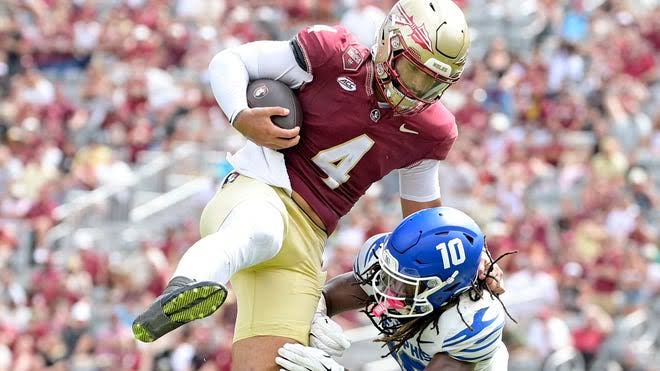
Florida State Seminoles Football: Navigating Challenges and Embracing Change
The Florida State Seminoles football program, a storied entity in collegiate football, has encountered a series of challenges and transformations in recent years.
From unexpected performance downturns to significant administrative and financial restructuring, the Seminoles are poised to redefine their trajectory in the evolving landscape of college football.

A Tumultuous Season
The 2024 season was one of the most challenging in recent memory for the Seminoles. Despite entering the season with high expectations, including a top-ten preseason ranking, the team concluded with a 2–10 record. This marked their worst performance since 1974.
The season’s struggles were attributed to a combination of factors, including injuries, coaching changes, and intense competition. Mid-season, the team experienced significant coaching staff changes, with both the offensive and defensive coordinators relieved of their duties.
Strategic Coaching Overhauls
In response to the previous season’s challenges, Florida State made strategic moves to bolster its coaching staff. Gus Malzahn, formerly the head coach at the University of Central Florida (UCF), was appointed as the offensive coordinator and quarterbacks coach.
Tony White, previously the defensive coordinator at Nebraska, joined as the defensive coordinator. Additional coaching enhancements included the hiring of Herb Hand (offensive line coach), Evan Cooper (safeties coach), Tim Harris Jr. (wide receivers coach), and Terrance Knighton (defensive line coach).
Financial Realignment with the ACC
Beyond the field, Florida State has been proactive in addressing financial disparities within the Atlantic Coast Conference (ACC).
In collaboration with Clemson University, the Seminoles engaged in legal proceedings against the ACC, advocating for a more equitable revenue distribution model. The settlement, finalized earlier this week, introduces a tiered revenue-sharing system based on television viewership metrics.
This model allocates 40% of media revenues equally among ACC schools, while the remaining 60% is distributed based on viewership ratings over the past five years. This change is projected to increase annual revenues for high-performing programs like Florida State by up to $15 million.

Implications of the Settlement
The revised revenue-sharing model holds significant implications for Florida State. Historically, the Seminoles have been a dominant force in college football, and the new financial structure acknowledges their influence and potential. The additional funds are expected to enhance various aspects of the program, including recruiting, facilities, and overall competitiveness.
However, it’s essential to note that while this settlement offers immediate financial relief, the landscape of college athletics is continually evolving. The emergence of new media deals, such as the Southeastern Conference’s (SEC) agreement, may influence future revenue distributions.
Looking Ahead
As Florida State transitions into the 2025 season, the combination of strategic coaching enhancements and a more favorable financial environment positions the Seminoles for a potential resurgence.
The challenges of the previous season serve as a catalyst for change, driving the program to innovate and adapt. With a renewed focus on excellence both on and off the field, Florida State aims to reclaim its stature as a powerhouse in college football.
Recent Headlines





